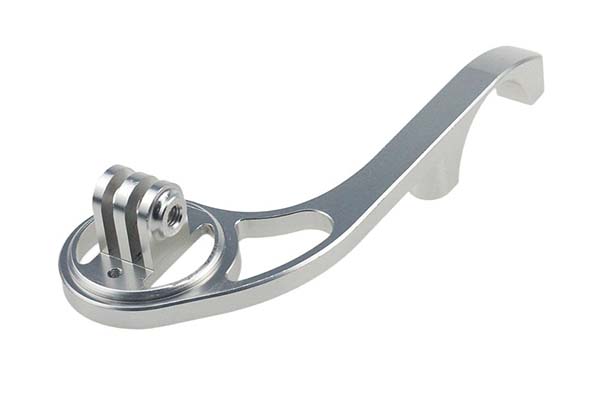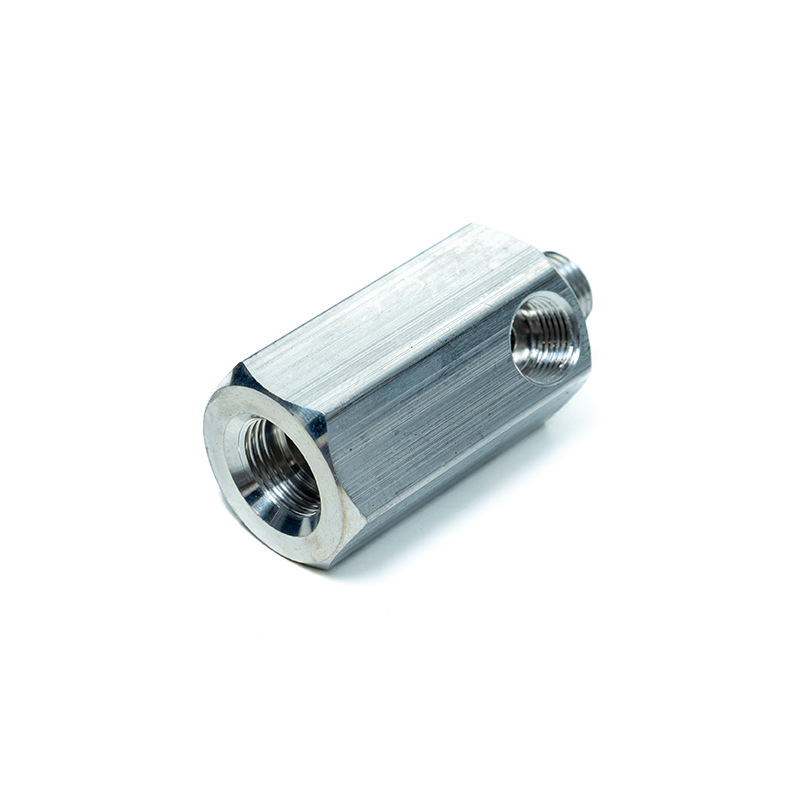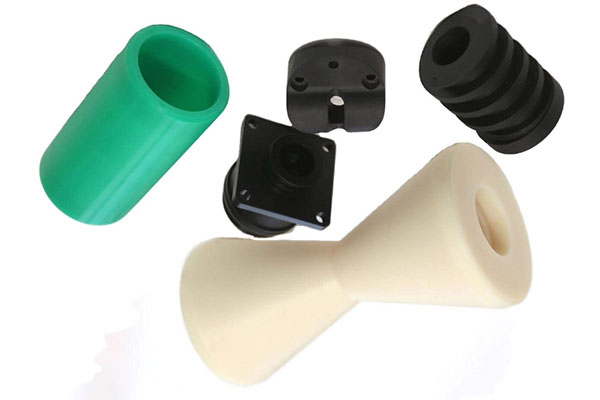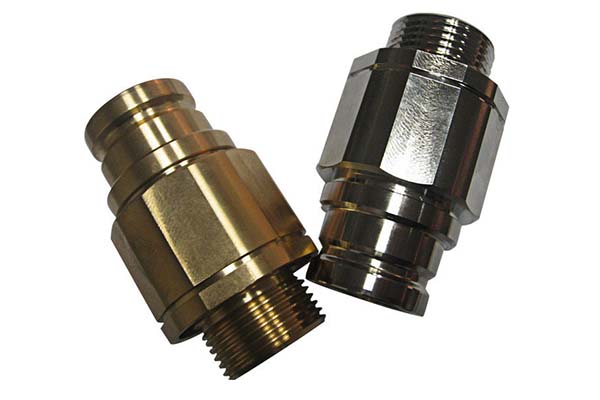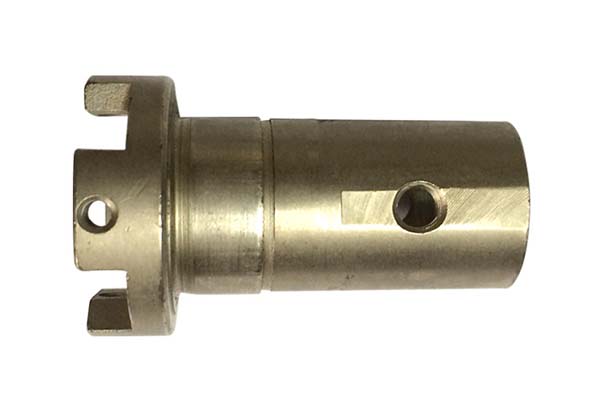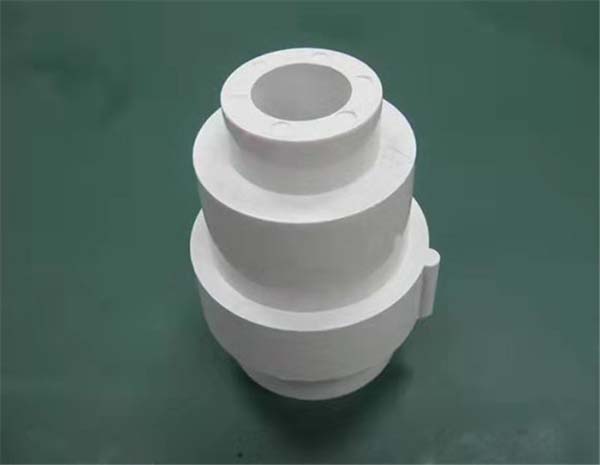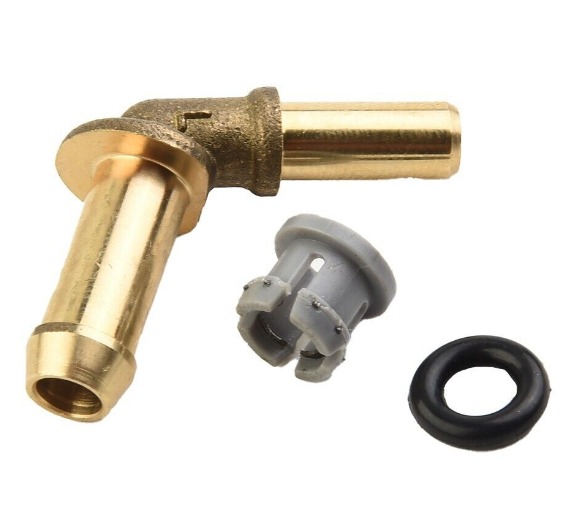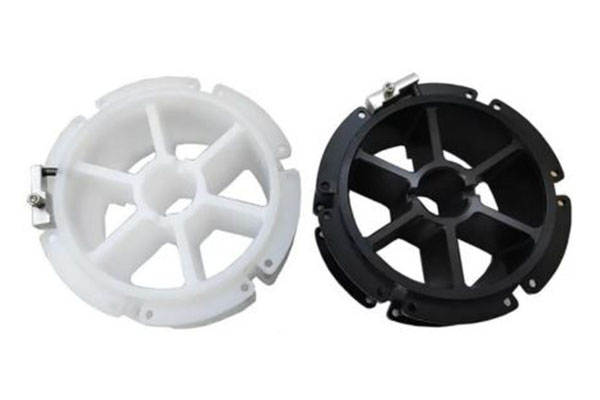CNC machining of AL2024 T3/T4 presents unique challenges tied to their high-strength properties and temper-specific characteristics. AL2024 alloy’s high copper content (4.5%) enhances its mechanical properties but also increases its abrasiveness, accelerating tool wear and reducing tool life compared to softer aluminum alloys like 6061. The T3 and T4 tempers—resulting from different heat treatment processes—exhibit distinct machining behaviors: T3’s higher strength (due to artificial aging) increases cutting forces, while T4’s greater ductility (from natural aging) can cause chip welding to tools, leading to poor surface roughness. Both tempers are prone to work hardening, where repeated cutting in the same area increases material hardness, requiring adjusted cutting parameters to maintain precision. Achieving tight tolerance levels is further complicated by their moderate thermal conductivity; uneven heat distribution during machining can cause subtle warping, affecting dimensional accuracy. This guide addresses these pain points, offering expert strategies to master CNC machining of AL2024 T3/T4.
Material Properties of AL2024 T3/T4
AL2024 alloy in T3 and T4 tempers boasts properties that make it indispensable in high-stress applications, while influencing its machinability:
- Mechanical properties: T3 offers a tensile strength of 470 MPa and hardness of 120 HB, while T4 has a tensile strength of 440 MPa and hardness of 110 HB—both significantly higher than 6061, requiring robust cutting tools.
- Corrosion resistance: Moderate resistance to general corrosion but susceptible to intergranular corrosion, often requiring surface treatment like anodizing for protection in harsh environments.
- Density: 2.78 g/cm³, slightly higher than 6061, contributing to its strength-to-weight ratio ideal for structural components.
- Thermal conductivity: 121 W/(m·K), lower than 6061, causing heat to accumulate more at the cutting edge, increasing the risk of tool dulling and surface defects.
- Workability: T3’s lower ductility makes it more prone to chipping during drilling or milling, while T4’s higher ductility can lead to burring if feed rate is too high.
CNC Machining Process for AL2024 T3/T4
The CNC machining process for AL2024 T3/T4 requires tailored approaches to handle their strength and temper differences:
- Precision machining: Both tempers benefit from high-speed machining to minimize heat buildup. For T3, a spindle speed of 8,000-12,000 RPM and feed rate of 0.1-0.2 mm/tooth reduces tool wear, while T4 performs well with slightly higher speeds (10,000-15,000 RPM) to prevent chip adhesion.
- Milling and turning: Milling uses 2-4 flute carbide end mills with sharp cutting edges to avoid chipping. T3 requires a depth of cut of 0.5-1 mm to manage cutting forces, while T4 can handle 0.8-1.2 mm due to its ductility. Turning uses spindle speeds of 3,000-5,000 RPM, with T3 needing lower feed rates (0.1-0.15 mm/rev) than T4 (0.12-0.18 mm/rev).
- Drilling: Carbide drills with a 130° point angle prevent delamination, with peck drilling (intermittent retraction) clearing chips to reduce heat buildup—critical for T3 to avoid work hardening.
- Cutting parameters optimization: Coolant flow rates of 10-15 L/min dissipate heat, with T3 requiring higher pressure (40-50 bar) to manage its higher cutting forces compared to T4 (30-40 bar).
Surface Finishing for AL2024 T3/T4
Surface finishing is critical for AL2024 T3/T4 to enhance performance and aesthetics:
- Surface roughness: Achieving Ra 0.8-1.6 μm requires polished carbide tools and optimized spindle speed—T3 benefits from slower speeds to reduce chipping, while T4 needs faster speeds to avoid smearing.
- Anodizing: A common surface treatment that forms a protective oxide layer (5-25 μm thick), improving corrosion resistance and providing a base for coating in aerospace components.
- Polishing and grinding: Secondary processes for critical surfaces, with T3 requiring more aggressive grinding due to its higher hardness, while T4 polishes more easily due to its ductility.
- Coating: Organic coatings or conversion coatings (like chromate) further enhance corrosion resistance, essential for automotive parts and industrial machinery exposed to moisture.
Heat Treatment of AL2024 T3/T4
Heat treatment defines the T3 and T4 tempers, influencing their machining behavior:
- T3 temper: Produced via solution heat treatment (heated to 495°C), quenched, and then artificially aged at 120°C for 24 hours—resulting in high strength and low ductility, ideal for load-bearing aerospace components.
- T4 temper: Undergoes solution heat treatment followed by natural aging (room temperature for 96 hours), developing slightly lower strength but higher ductility, suitable for structural components requiring formability.
- Heat treatment process impact: T3’s artificial aging creates a more uniform microstructure, reducing machining variability, while T4’s natural aging can lead to slight property variations, requiring tighter process control.
Applications of AL2024 T3/T4
CNC machined AL2024 T3/T4 parts excel in high-stress applications:
- Aerospace components: Wing ribs, fuselage frames, and landing gear parts leverage T3’s high strength, while T4 is used for components requiring minor forming after machining.
- Automotive parts: High-performance suspension components and racing car chassis use T3 for its strength, while T4 suits parts needing post-machining bending.
- Electronic enclosures: Structural frames for heavy-duty equipment benefit from their rigidity, with surface treatment protecting against environmental damage.
- Industrial machinery: Tooling plates and load-bearing brackets use T3 for durability, while T4 is preferred for parts requiring occasional impact resistance.
Tool Selection for AL2024 T3/T4
Tool selection is critical for efficient machining of AL2024 T3/T4:
- Cutting tools: Carbide inserts with TiAlN coating offer high hardness (92 HRA) and wear resistance, extending tool life by 40-60% compared to uncoated carbide when machining T3.
- High-speed steel (HSS) tools: Suitable for low-volume runs but have 5-10 times shorter tool life than carbide, making them cost-ineffective for mass production.
- Tool geometry: Negative rake angles (-5° to -10°) for T3 reduce cutting forces, while positive rake angles (+5° to +10°) for T4 minimize chip adhesion—both with sharp cutting edges (radius <0.02 mm) to reduce work hardening.
- Tool wear management: T3 causes faster flank wear (0.15 mm per 100 parts) compared to T4 (0.1 mm per 100 parts), requiring more frequent tool inspections.
Quality Control for AL2024 T3/T4
Rigorous quality control ensures AL2024 T3/T4 parts meet strict standards:
- Dimensional accuracy: Coordinate measuring machines (CMMs) verify tolerance levels of ±0.02-0.05 mm, with T3 requiring tighter controls due to its lower ductility.
- Inspection methods: Ultrasonic testing detects subsurface defects in critical parts, while visual inspections check for chipping and burring—more common in T3 due to its brittleness.
- Quality standards: Compliance with AMS 4037 (T3) and AMS 4038 (T4) ensures material consistency, with quality assurance protocols including heat treatment certification verification.
- Measurement tools: Laser scanners and optical comparators provide non-contact measurements, avoiding part deformation during inspection—critical for thin-walled components.
Comparison of AL2024 T3 and T4
| Property | T3 | T4 |
| Tensile Strength (MPa) | 470 | 440 |
| Hardness (HB) | 120 | 110 |
| Ductility (% Elongation) | 10 | 15 |
| Fatigue Resistance | Higher | Moderate |
| Cost | 5-10% higher (due to heat treatment) | Lower |
| Application Suitability | Load-bearing aerospace parts | Structural components needing formability |
Yigu Technology's Perspective
Yigu Technology specializes in CNC machining AL2024 T3/T4, leveraging expertise in their unique properties. We use carbide inserts with TiAlN coating and high-speed spindles to minimize tool wear and achieve Ra <1.6 μm surface roughness. Our precision machining processes tailor cutting parameters to each temper—lower feed rate for T3, higher spindle speed for T4—ensuring dimensional accuracy. Quality control includes CMM inspections and compliance with AMS standards, critical for aerospace components. We recommend T3 for high-strength applications and T4 for parts needing ductility, optimizing tool selection and surface treatment to deliver cost-effective, reliable results.
FAQ
- Why is AL2024 T3 harder to machine than T4?
T3’s higher strength (470 MPa vs. T4’s 440 MPa) and lower ductility increase cutting forces and tool wear. Its artificial aging creates a more rigid microstructure, making it prone to chipping, while T4’s natural aging results in greater ductility, reducing cutting resistance but increasing chip adhesion risks.
- What surface treatment is best for AL2024 T3/T4?
Anodizing (type II or III) is ideal, forming a protective oxide layer that enhances corrosion resistance and provides a base for coating. Type III (hard anodizing) offers thicker layers (25-50 μm) for aerospace components, while type II suits general applications.
- How to achieve tight tolerances in AL2024 T3/T4 machining?
Use rigid CNC machines with high-speed spindles (10,000-15,000 RPM), carbide tools with sharp edges, and optimized feed rate (0.1-0.2 mm/tooth). Allow parts to cool to room temperature before inspection (thermal expansion: 23.2 μm/m·°C) and use CMMs for dimensional accuracy verification.
